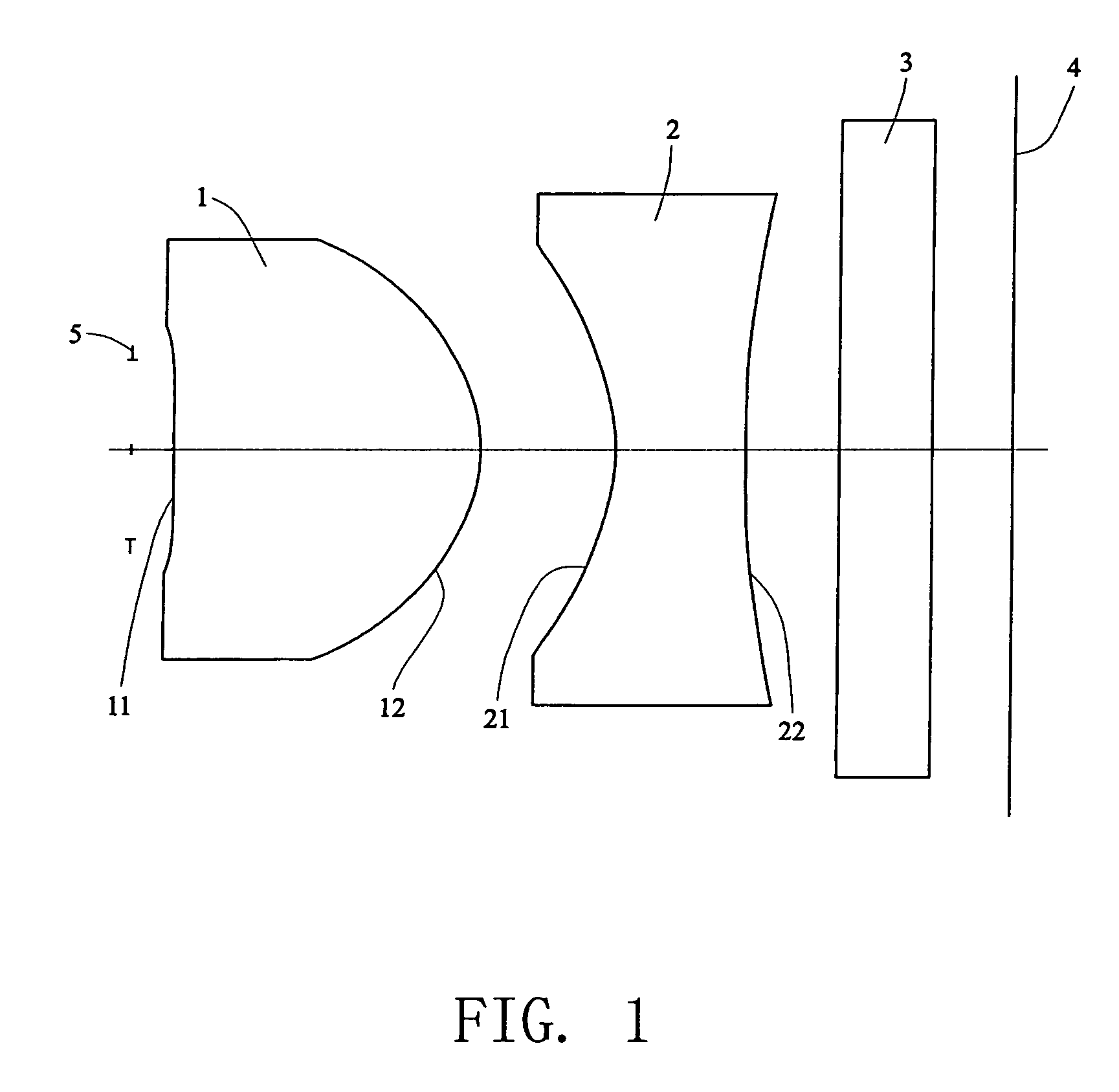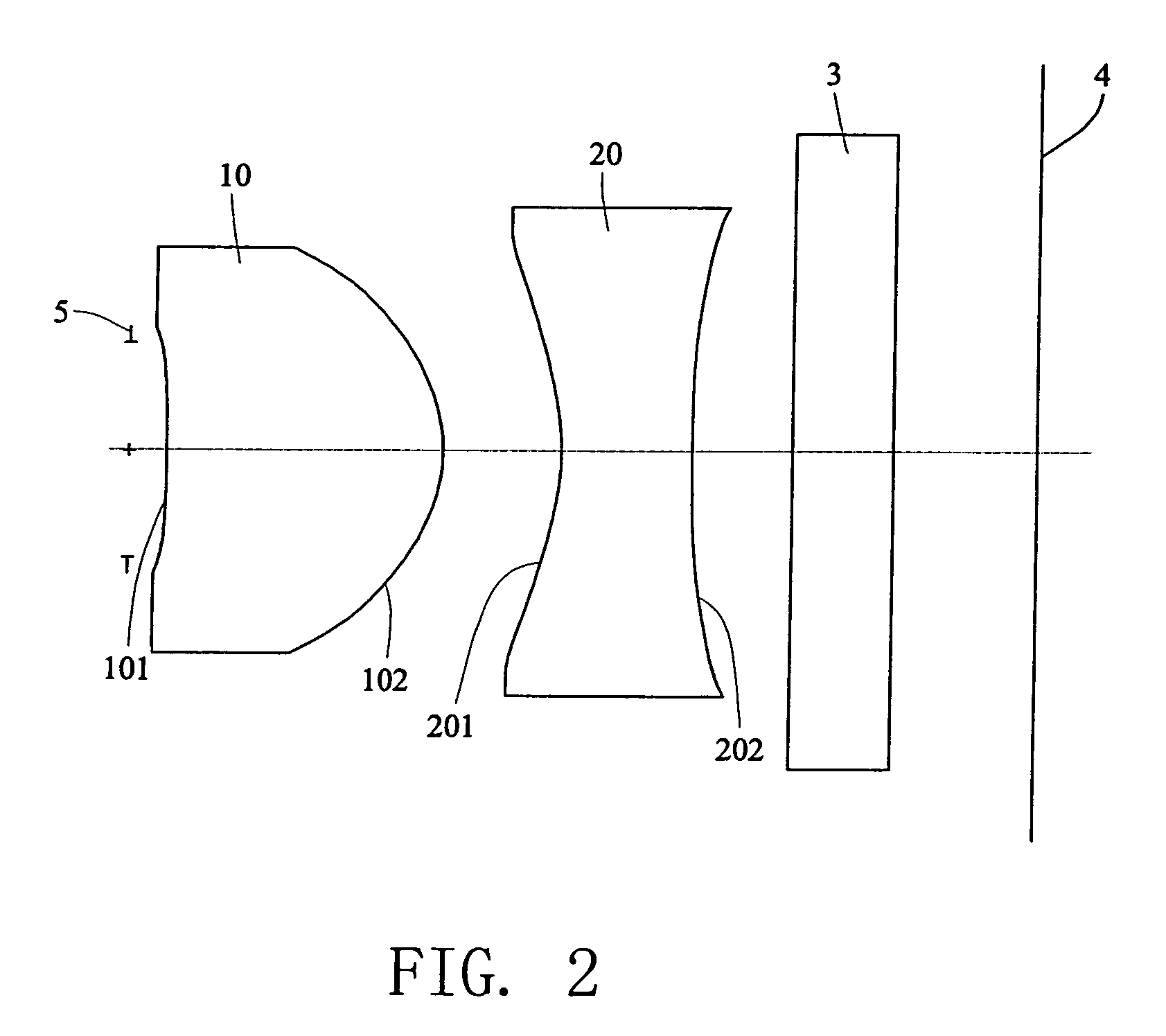Compact imaging lens system
a compact, lens technology, applied in the field of lenses, can solve the problems of spherical glass lenses, difficult to correct spherical aberration and astigmatic aberration, and the dimensions of portable imaging devices are much smaller, so as to facilitate cost reduction, reduce the overall length of optical systems, and reduce tolerance sensitivity
- Summary
- Abstract
- Description
- Claims
- Application Information
AI Technical Summary
Benefits of technology
Problems solved by technology
Method used
Image
Examples
Embodiment Construction
[0032]Referring to FIG. 1, a compact imaging lens system in accordance with the present invention comprises a first positive lens element 1 on the object side, and a second negative lens element 2 on the image side. The incident light from the object to be imaged is transmitted through the first and second lens elements 1, 2, and is focused onto an image pickup device (image plane) 4, such as a CCD (Charge-Coupled Device) sensor or CMOS (Complimentary Metal-Oxide Semiconductor) sensor, to obtain a clear image. A cover glass 3 is shown between the second lens element 2 and the image plane 4, and an aperture 5 is disposed in front of the first lens element 1. The cover glass 3 serves to protect the image pickup surface of the image pickup device 4. For convenience of illustration, the cover glass 3 is shown as being positioned to the left side of the image plane 4. However, it is actually positioned with a surface in contact with the image pickup surface of the image pickup device tha...
PUM
 Login to View More
Login to View More Abstract
Description
Claims
Application Information
 Login to View More
Login to View More - R&D
- Intellectual Property
- Life Sciences
- Materials
- Tech Scout
- Unparalleled Data Quality
- Higher Quality Content
- 60% Fewer Hallucinations
Browse by: Latest US Patents, China's latest patents, Technical Efficacy Thesaurus, Application Domain, Technology Topic, Popular Technical Reports.
© 2025 PatSnap. All rights reserved.Legal|Privacy policy|Modern Slavery Act Transparency Statement|Sitemap|About US| Contact US: help@patsnap.com



